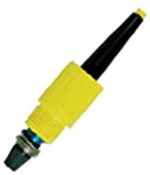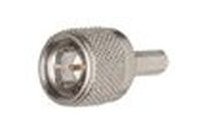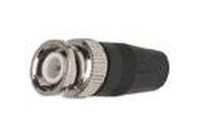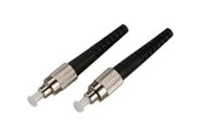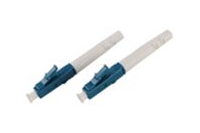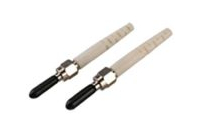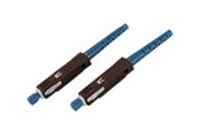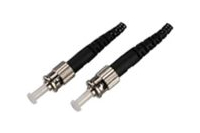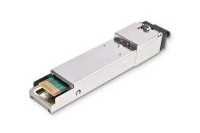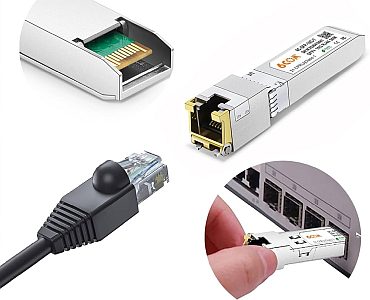
Introduction
In today's IT world, the speed, stability, and quality of data transmission are essential. Network interfaces and connectors are physical components that enable connections between devices in computer networks. They come in various types depending on the transmission medium (copper or fiber), speed, standard, and purpose. This article explores the most common network interfaces and connectors: RJ-45, SMA, SFP, SFP+, SC, and others used in residential, corporate, and industrial environments.
- RJ-45 — the Ethernet standard
- SMA — high-frequency signal connector
- SFP — network flexibility
- SFP+ — next-generation interface
- SC — classic fiber connector
- Other interfaces and connectors
- Conclusion
1. RJ-45 — the Ethernet standard
RJ-45 (Registered Jack 45) is the most common connector for twisted-pair Ethernet connections (10/100/1000/10GBase-T).
Characteristics:
- 8 contacts, 4 wire pairs;
- speeds up to 10 Gbps;
- max cable length: 100 meters;
- used with Cat5e, Cat6, Cat6a, Cat7 cables.
Advantages:
- low cost;
- easy installation;
- backward compatibility.
Disadvantages:
- limited range and speed;
- sensitive to electromagnetic interference.
2. SMA — high-frequency signal connector
SMA (SubMiniature version A) is a coaxial RF connector used in antenna systems, Wi-Fi access points, GPS modules, and radio equipment.
Characteristics:
- supports frequencies up to 18 GHz;
- threaded connection;
- low signal loss.
Advantages:
- vibration-resistant;
- high-quality RF transmission;
- compatible with many coaxial cables.
Disadvantages:
- not used in standard Ethernet networks;
- does not support digital Ethernet data.
3. SFP — network flexibility
SFP (Small Form-factor Pluggable) is a modular fiber or copper interface inserted into switches, routers, and media converters.
Characteristics:
- speeds up to 1 Gbps;
- supports fiber and twisted pair;
- hot-swappable;
- works with LC, SC, and other connectors.
Module types:
- 1000Base-SX — short range, multimode fiber;
- 1000Base-LX — long range, single-mode fiber;
- 1000Base-T — copper via RJ-45.
4. SFP+ — next-generation interface
SFP+ is an enhanced version of SFP supporting speeds up to 10 Gbps. It is used in data centers and by ISPs.
Features:
- compact size;
- supports 10GBase-SR, -LR, -ER;
- works with LC or DAC cables.
5. SC — classic fiber connector
SC (Subscriber Connector) is a popular fiber optic connector.
Characteristics:
- "push-and-click" mechanism;
- suitable for single- and multimode fiber;
- low loss (up to 0.25 dB).
Applications:
- telecom networks;
- office fiber networks;
- operator infrastructure.
6. Other interfaces and connectors
- LC (Lucent Connector) – compact, high-density fiber connector;
- MT-RJ – dual-fiber connector, RJ-45–like format;
- QSFP/QSFP+ – used for 40/100/200 Gbps links;
- BNC – coaxial connector for CCTV and legacy Ethernet.
Conclusion
Choosing the right network connector depends on your environment and performance needs:
- RJ-45 — for home and office networks;
- SC, LC, SFP — for fiber connections;
- SMA, BNC — for RF and specialized use;
- SFP+, QSFP+ — for high-speed networking.
 |  | 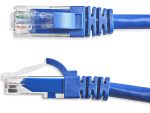 |  |
Coaxial BNC | Coaxial TNC | Twisted pair RJ-45 | SFP module |
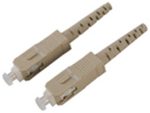 |  |  |  |
Fiber Optic SC | Fiber Optic ST | Fiber Optic FC | Fiber Optic SMA |
 | 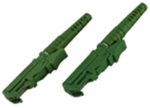 |  | 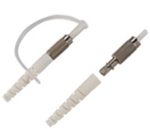 |
Fiber Optic LC | Fiber Optic E2000 | Fiber Optic MU | Fiber Optic DIN |
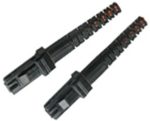 | 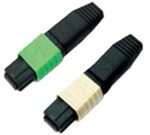 | 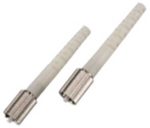 | |
Fiber Optic MTRJ | Fiber Optic MPO | Fiber Optic D4 | Fiber Optic Biconic |








